
Spring Lawn Care: Essential Steps for a Lush, Green Yard
Published: 02/05/2025 | Updated: 02/05/2025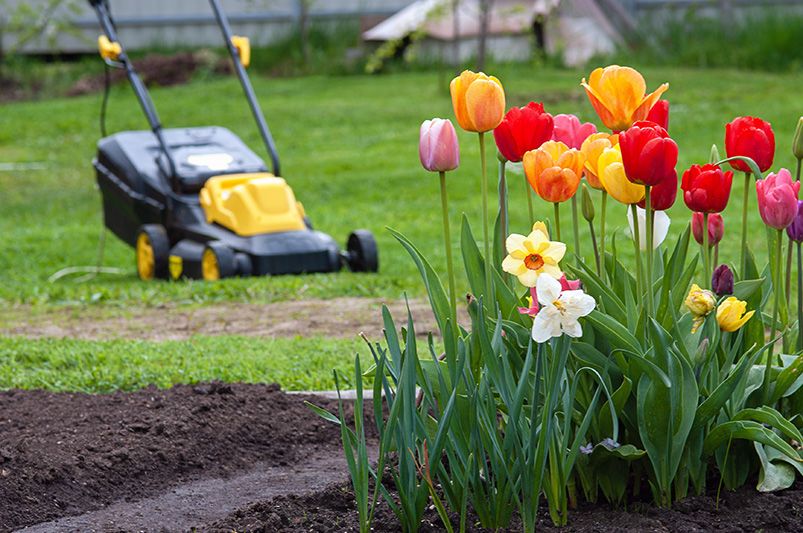
As winter fades away and warmer days approach, your lawn is finally ready to wake up from its seasonal slumber. But after months of cold temperatures, compacted soil, and potential damage, your grass needs a little TLC to bounce back beautifully. Preparing your lawn for spring isn’t just about aesthetics—it’s about setting the foundation for healthy, lush growth that lasts all season long.


With the right steps, you can revive your lawn, prevent weeds, and ensure strong, vibrant grass. Whether you're a seasoned gardener or just starting out, following a simple lawn care routine will make all the difference.
At ShrubHub, we’re dedicated to helping homeowners create and maintain stunning outdoor spaces. From expert landscaping advice to affordable design solutions, our team is here to guide you every step of the way. Don’t forget to check out our weekly blog, where we share pro tips, seasonal care guides, and creative ideas to elevate your lawn and garden all year round!
Step 1: Clean Up and Assess Your Lawn
After months of harsh winter conditions, your lawn is likely covered in fallen leaves, twigs, and other debris that can block sunlight and trap excess moisture. A thorough cleanup is the first step in helping your grass breathe and absorb the nutrients it needs to grow strong in spring.
Start with a Deep Cleanup
Grab a rake or a leaf blower and clear away any lingering debris. Removing layers of dead leaves and organic matter prevents mold growth and allows fresh air to circulate through the soil. Be sure to check under shrubs and around fences, as these areas tend to collect debris over the winter.
Assess for Winter Damage
Take a walk around your yard and look for signs of winter stress, such as:
- Bare or thinning patches where grass has died.
- Compacted soil that feels hard underfoot, making it difficult for roots to access water and nutrients.
- Signs of lawn diseases like snow mold, which appears as matted, discolored patches of grass.
Identifying these issues early will help you take the right steps to restore your lawn’s health.
Dethatch and Rake for Healthier Growth
If your lawn feels spongy or has a layer of brown, dead grass at the base, it may have a buildup of thatch. Thatch is a dense layer of organic material that can suffocate your grass by preventing water and nutrients from reaching the roots. Use a dethatching rake or a power dethatcher to break up and remove this layer, allowing your lawn to breathe and absorb essential nutrients.
Clearing your lawn and assessing its condition is the foundation for a lush, thriving yard. With a fresh start, your grass will be ready to take in nutrients and grow strong as spring unfolds.
Step 2: Improve Soil Health and Prevent Weeds
A beautiful, thriving lawn starts from the ground up—literally! Your soil’s health plays a crucial role in how well your grass grows, absorbs nutrients, and resists weeds. By giving your soil the care it needs early in the season, you’ll set your lawn up for a lush, green spring.
Test Your Soil for Optimal Growth
Before adding any fertilizers or treatments, it’s essential to understand what your soil actually needs. A soil test helps determine your lawn’s pH level and nutrient deficiencies, ensuring you don’t overapply or underuse essential amendments.
- Ideal lawn pH levels range between 6.0 and 7.0—if it’s too acidic, add lime; if it’s too alkaline, apply sulfur.
- A soil test also reveals deficiencies in nitrogen, phosphorus, and potassium, the three key nutrients for healthy grass growth.
You can purchase a soil testing kit from a garden center or send a sample to a local agricultural extension service for a detailed analysis.
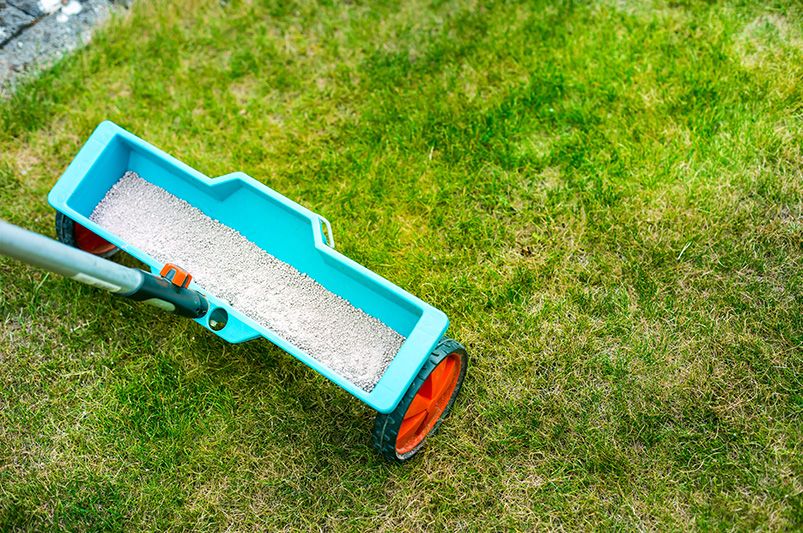
Enrich Your Lawn with Compost or Fertilizer
Once you know what your soil needs, it’s time to give it a nutrient boost! Spring is the perfect time to feed your lawn so it can recover from winter stress and grow strong.
- Compost: A natural way to add organic matter, improve soil structure, and boost microbial activity. Spread a thin layer (¼ inch) over your lawn and rake it in.
- Fertilizer: Choose a slow-release, nitrogen-rich fertilizer to promote steady, vibrant growth without overwhelming your grass. Look for a balanced blend (such as 10-10-10) or a formula specifically designed for spring application.
Apply Pre-Emergent Weed Control
Weeds can quickly take over if left unchecked, competing with your grass for nutrients, sunlight, and water. The best way to stop them before they start is by applying a pre-emergent herbicide in early spring.
- Pre-emergents create a barrier that prevents weed seeds from germinating—especially pesky invaders like crabgrass and dandelions.
- Timing is key: Apply the treatment when soil temperatures reach 50-55°F (usually when forsythia bushes start blooming).
- Water lightly after application to activate the herbicide and ensure it soaks into the soil.
By strengthening your soil and tackling weeds before they sprout, you’ll create the perfect conditions for a thick, healthy lawn all season long.
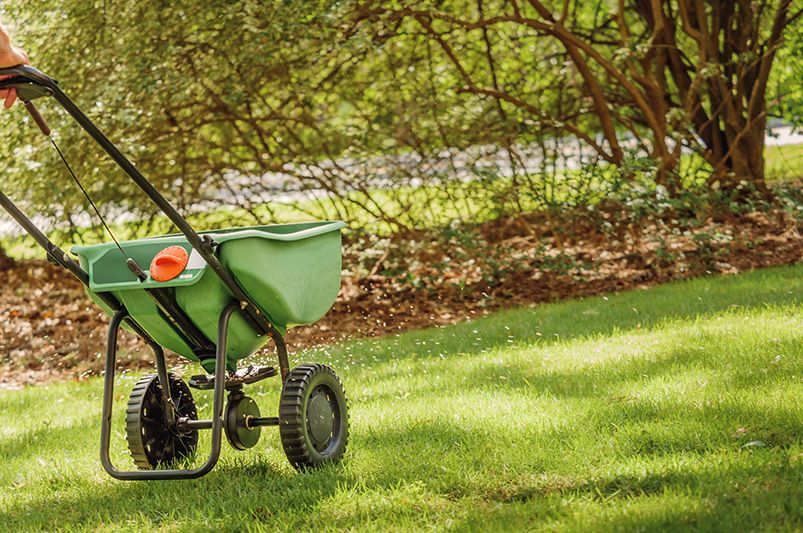
Step 3: Overseed and Water Wisely
Even the healthiest lawns can develop thin or bare patches after a long winter. Overseeding—adding new grass seed to existing turf—is an essential step to achieving a thicker, more resilient lawn. Pair this with a smart watering strategy, and your grass will grow stronger, deeper roots, making it more resistant to drought and weeds.
Fill in Bare Patches with the Right Grass Seed
If you notice thin or bald spots on your lawn, overseeding can help restore its lush, even appearance. Choosing the right grass seed for your climate and lawn type is crucial for success.
- Cool-season grasses (e.g., fescue, Kentucky bluegrass) thrive in northern regions and should be overseeded in early spring or fall.
- Warm-season grasses (e.g., Bermuda, zoysia) grow best in southern climates and should be seeded once temperatures consistently warm up.
- For a blended lawn, opt for a mix of grass seed varieties suited to your area for a uniform look.
To overseed effectively:
- Loosen the soil in bare patches using a rake or aerator.
- Spread the seed evenly, following the recommended seeding rate on the package.
- Cover lightly with compost or a thin layer of soil to protect the seeds.
- Water gently to keep the area moist but not soggy.
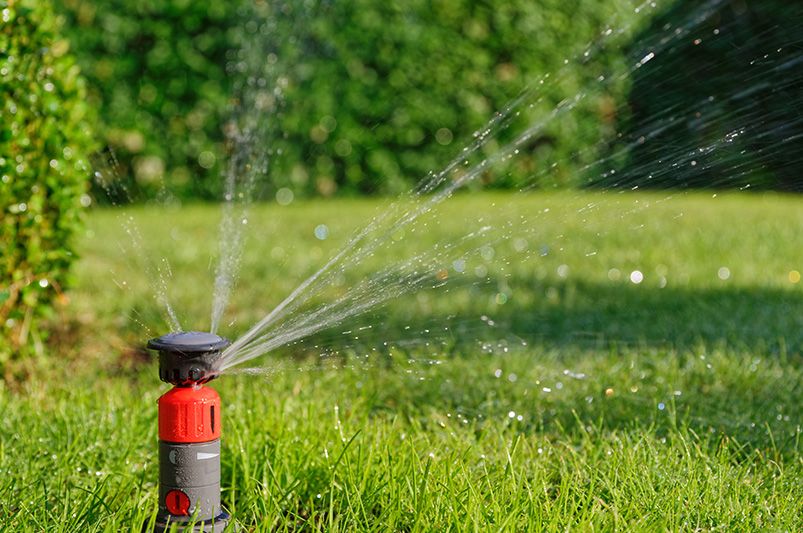
Establish an Efficient Watering Schedule
Watering your lawn correctly is just as important as planting new seeds. Overwatering can lead to disease and shallow roots, while underwatering can stunt growth. A deep and infrequent watering routine encourages grass roots to grow deeper, making them more resilient to drought.
- Early morning watering is best (between 6–10 AM) to reduce evaporation and allow time for the grass to dry, preventing disease.
- Aim for 1–1.5 inches of water per week, including rainfall.
- Use a soaker hose or sprinkler system for even distribution, ensuring the water reaches at least 6 inches deep into the soil.
Why Early Spring is the Perfect Time to Start
Spring provides the ideal conditions for grass growth and root development. As temperatures rise, your lawn will naturally enter its active growing phase, making it easier for new seeds to establish and thrive. By overseeding and setting up a consistent watering schedule now, you’re ensuring a lush, healthy lawn that can withstand the heat of summer.
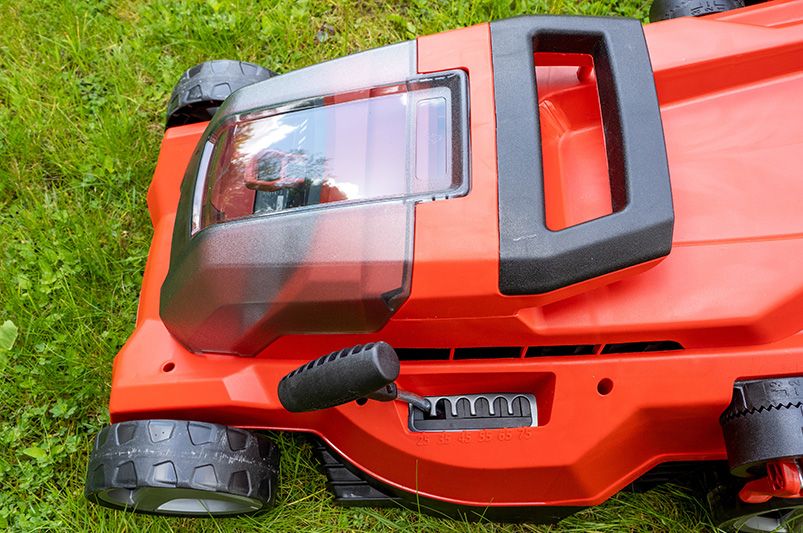
Step 4: First Mow and Final Touches
With your lawn prepped, seeded, and well-watered, it’s time for the finishing touches that will give it a neat, polished, and professionally maintained appearance. Mowing, edging, and mulching are essential final steps to promote healthy growth and boost curb appeal.
When and How to Mow for the First Time in Spring
Your lawn’s first mow sets the tone for the entire season, so timing and technique are key. Here’s what to keep in mind:
- Wait until the grass reaches at least 3–4 inches tall before the first mow to ensure strong root development.
- Set your mower height to remove only the top third of the grass blades—cutting too short can stress your lawn and encourage weed growth.
- Mow on dry grass to prevent clumping and uneven cuts. Wet mowing can also lead to soil compaction and fungal diseases.
Regular mowing encourages thicker, healthier grass. However, avoid over-mowing—keeping your lawn slightly taller helps it retain moisture and resist weeds.
The Importance of Sharpening Mower Blades
Dull mower blades tear grass instead of making clean cuts, leading to frayed, brown edges that make your lawn vulnerable to disease and stress. Before your first mow:
- Check and sharpen your mower blades to ensure a precise, even cut.
- If blades are too worn, replace them for optimal performance.
- Clean the mower deck to remove any leftover debris and grass clippings from the previous season.
A well-maintained mower keeps your lawn looking crisp and healthy all season long.
Edging and Mulching for a Polished Look
Once your lawn is mowed, edging and mulching add the final professional touch.
- Edging: Creates clean lines along sidewalks, driveways, and garden beds, giving your lawn a crisp, defined appearance. Use a manual edger or a power trimmer to cut away overgrown grass.
- Mulching: Applying mulch around flower beds and tree bases helps retain moisture, regulate soil temperature, and suppress weeds. Opt for organic mulch like shredded bark or wood chips for a natural, polished look.
By following these steps, your lawn will not only look stunning but also be set up for long-term health and growth throughout the season.
Conclusion
Now that you’ve completed these essential spring lawn care steps, your yard is primed for a lush, green transformation. A little preparation goes a long way in ensuring your lawn remains thick, healthy, and weed-free all season.
Need expert guidance for your outdoor space? At ShrubHub, we’re here to help with professional landscaping advice, custom landscape design solutions, and weekly blog articles packed with expert tips. Get your lawn spring-ready with ease—contact ShrubHub today for expert lawn care solutions and inspiration!


